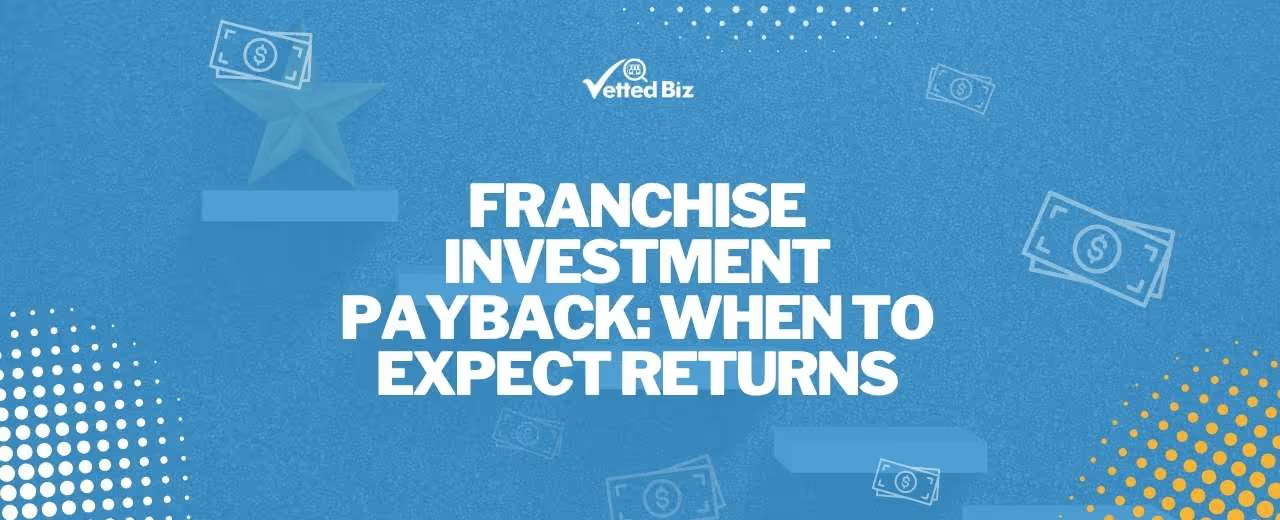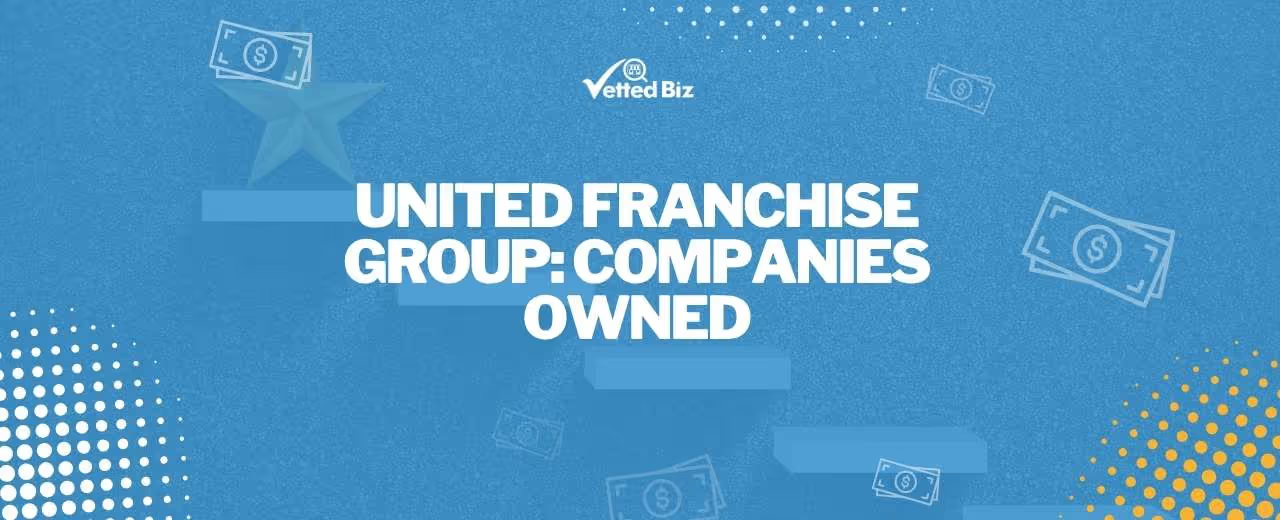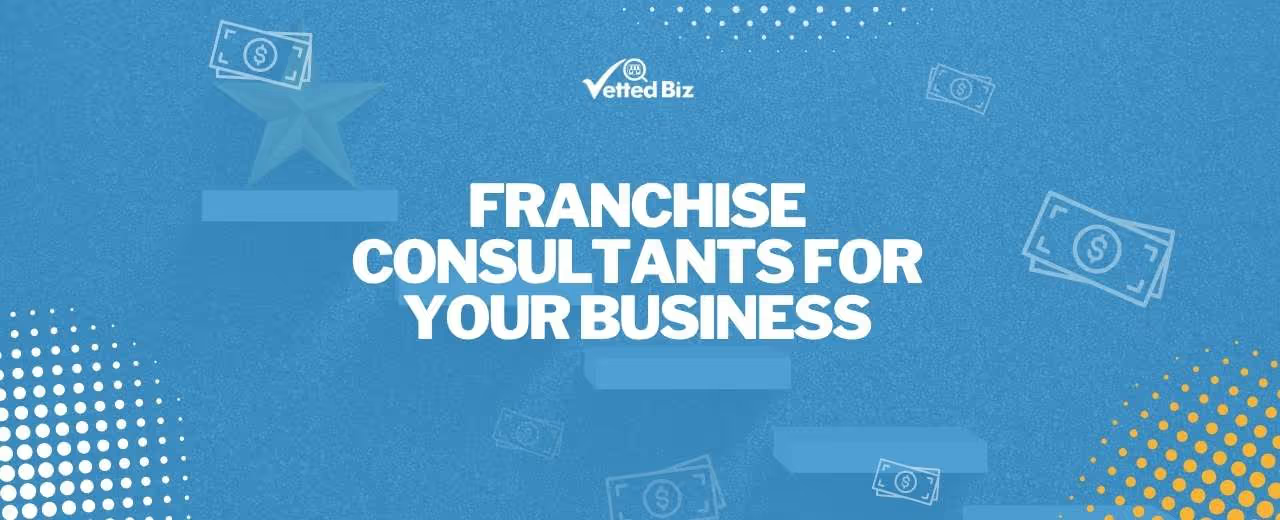Franchise Payback: When Do You Get Back Your Investments?

Introduction
At Vetted Biz we help you find, vet, and finance a franchise or business. Today I want to talk a little bit about franchise and investments payback. When can you get your money back? Isn't that the key question? A lot of people go into franchising so they can be their boss, have, you know, potentially a better lifestyle, and many people go into it for the money.
There are all different types of priorities, and you need to rank what your priority is before you start the evaluation process of selecting a franchise or a business for sale. But a key factor to consider is when can you get your money back? If you're investing $200,000, is it going to take you 2 years to get $200,000 in profit? Three years? Four years? Five years? There are some questions to ask when you're talking to franchisors when you're reviewing their franchise disclosure document, as well as when you're talking to franchisees.
Franchise Payback: When Do You Get Back Your Investments?
The key item is the investments. What is the prospective investment range? And what do you think it would be for you and the community that you live in to open that franchise? It's really important to talk to the franchisor, and talk to the franchisees to understand what an estimate and minus are for investing to open up a franchise.
For example, a real estate property management franchise in South Florida could cost $70,000 including working capital whereas if you're in Kansas, it could be more like $50,000. It's just going to depend on a lot state by state, as well as city, and county by county.
When Are You Going to Break Even?
There are some franchises, it could be a tutoring franchise or a barbershop franchise where you could break even the first month or second month depending on the location. However, for those two concepts, it could be like three months, or four months. For a restaurant, it could take five months to break even, six months to break even. For a staffing business or other businesses that are very reliant on sales and take a while for the income to come in, it might take a full year for you to break even, and that's important to understand when you're evaluating the different franchises opportunities. The break-even point is really important.
When Does the Business Stabilize?
Those are two fundamental periods of the business, one when you break even, and then two, when you pass the business stability point and your profits are slowly creeping up, hopefully slowly creeping up and not staying at the same level.It's important to understand the sales of the business. What the estimated investment is going to be, and then what the margin has been for other franchisees that operate a business that you're looking to invest in as well in a similar demographic community. You could compare a client who wants to open up a business in Santa Monica to compare it to another trendy area of California where rents are higher, but also there's a higher disposable income.Also, it's really important to understand the average sales, the range of sales, average margin, and range of margin, and usually get that from Item 19 of the franchise's disclosure document together with discussions with the franchisor as well franchisees. You should talk to 4, 5, 6, 10 franchisees until you're comfortable enough with the financial figures that you can then fine-tune your model. And we can help you with creating an Excel model to forecast out what that expected payback is.
What's Good in Terms of Payback?
What's good in terms of payback? If you're working full-time in the business, I'd say a year-and-a-half to four years max for investments below $500,000. You invest $100,000, I want to get that $100,000 back in about 2 years, 2-and-a-half years, that'd be ideal. If it's looking like the past four years, I'm going to look at some other opportunities.
If you're not working day-to-day in the business and you're investing, say, 10 hours a week of your time, then it can take a little longer to potentially get the money back, maybe two-and-a-half to four-and-a-half years to get your full investment back, but I wouldn't want it to be much more than five years.
And if it's truly hands-off where you're only working five hours a month in the business, it could then go further on to, say, five years, six years to return your capital.
Summary
It's really important to look at a few different factors. I mentioned sales, the profit margin of the business is very important, and then the investment level. A big red flag is when average sales are lower than the investment amount. Say you invest $500,000, average sales are $400,000 and the profit margin is 10%, $40,000 that you can expect to be making year to year. And it's going to take you a long time, it can take you 10 or more years to get your money back. Those are three really important factors to consider. What is the top line revenue? What's the margin? And how much does it cost to invest in the business?
Get insider access to franchise insights
Subscribe to receive expert tips, franchise rankings, and exclusive data straight to your inbox, trusted by thousands of aspiring business owners and investors.
Franchise resources & insights
Explore expert guides, data-driven articles, and tools to help you make smarter franchise decisions, whether you're just starting out or ready to invest.



